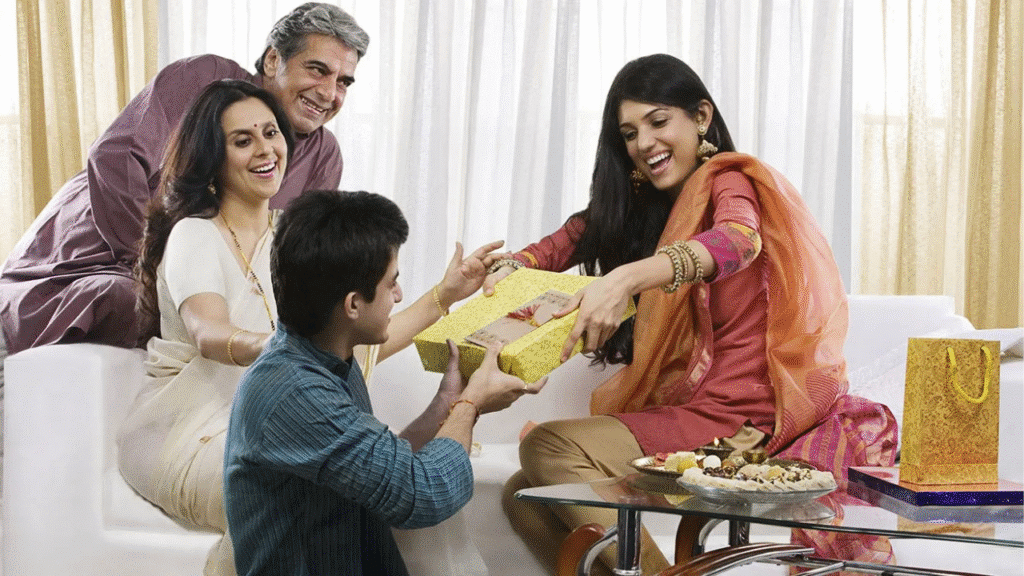Raksha Bandhan is one of the most emotionally significant festivals in Indian culture, celebrating the eternal bond between siblings. In 2025, this auspicious festival will be observed on Saturday, August 9. Sisters tie the Rakhi — a sacred thread also known as Raksha Sutra — on their brothers’ wrists as a symbol of love, protection, and good wishes. In return, brothers pledge to protect their sisters for life.
While the rituals on the day of Raksha Bandhan are followed with great joy and devotion, many people are unsure about what to do after the festival — especially regarding Rakhi removal and its proper disposal. Is there a right time to remove the Rakhi? Can it be thrown away? What does tradition say? Let’s understand the full significance, step-by-step.
When to Remove Rakhi After Raksha Bandhan 2025?
There is no universally fixed timeline for Rakhi removal, but Hindu traditions and scientific reasoning offer some helpful guidance. Here’s what to consider:
Religious Perspective:
- Minimum Duration: Rakhi should ideally remain tied for at least 24 hours after being tied.
- Common Removal Days:
- On the third, seventh, or eleventh day after Raksha Bandhan.
- During Janmashtami (August 16, 2025) or Ganesh Chaturthi (August 30, 2025).
- Latest Recommended Date: Before Pitru Paksha begins (starts on September 4, 2025), as this period is reserved for ancestral rituals and not considered ideal for wearing festive symbols.
- Flexible Customs: Some families may keep it until Bhadrapada Amavasya, which is around 15 days from Sawan Purnima (Raksha Bandhan day).
Check Out: Raksha Bandhan Gift Ideas 2025: 10 Heartwarming Surprises Your Sister Will Truly Adore
Scientific Perspective:
From a hygiene point of view:
- Most Rakhis are made of cotton, silk, or synthetic thread, which can trap dirt and moisture.
- Wearing it for too long may lead to skin irritation, especially if the Rakhi gets wet or soiled.
- It’s best to remove it once it starts loosening, fraying, or looking unclean.
Ideal Duration Scientifically: 3 to 5 days is optimal to maintain hygiene and avoid infection.
How to Dispose of Rakhi Respectfully?
Throwing the Rakhi in the dustbin is considered disrespectful due to the emotional and spiritual value it holds. Here are eco-friendly and respectful ways to part with the Rakhi:
✅ Best Practices for Rakhi Disposal:
- Water Immersion (Visarjan):
- The most common and traditional method.
- Immerse the Rakhi in a clean river, pond, or any flowing water body.
- If that’s not accessible, a bowl of clean water kept in the puja room can be used before disposing of the water in a respectful manner (like pouring it at the base of a tree).
- Tie it to a Sacred Tree:
- Tie the Rakhi to a Tulsi (Holy Basil) plant or Peepal tree at your home or nearby temple.
- This symbolizes protection and positivity.
- Bury it in Soil:
- Dig a small hole and bury the Rakhi near a plant in your garden or pots at home.
- This ensures the sacred thread returns to the earth with dignity.
- Do Not Burn or Trash:
- Burning the Rakhi or disposing it in the garbage is strongly discouraged as it is viewed as dishonoring the sacred bond it represents.
Check Out: Beautiful Bond, Perfect Timing: When is Raksha Bandhan 2025? Date, Muhurat & Rituals Explained
Why This Matters?
In Indian tradition, every ritual carries deeper meaning. The Rakhi is not just a decorative thread; it embodies blessings, prayers, and promises. Disposing of it with reverence is an important part of completing the cycle of the ritual.
Moreover, being mindful of the environment by avoiding synthetic Rakhis and choosing biodegradable materials makes the process even more spiritually and ecologically fulfilling.
Bonus Tip: Preserve It Creatively!
If your Rakhi is handcrafted or holds special memories, consider:
- Framing it in a memory box.
- Using it in scrapbooks or photo albums.
- Saving it in your personal diary as a token of love.
This can turn the Rakhi into a cherished keepsake rather than something to discard.
Raksha Bandhan 2025 Rakhi removal is not just about taking off a thread. It’s about concluding a sacred ritual with grace, respect, and gratitude. Whether you follow traditional customs or take a modern approach, what truly matters is honoring the emotion and love behind it.
So this year, once the festival joy settles, take a moment to respectfully bid farewell to the Rakhi — just as meaningfully as you welcomed it.


